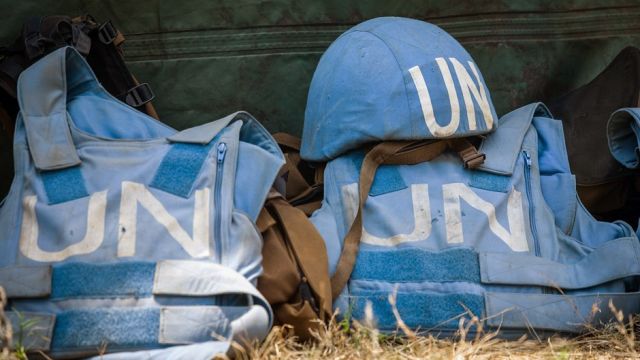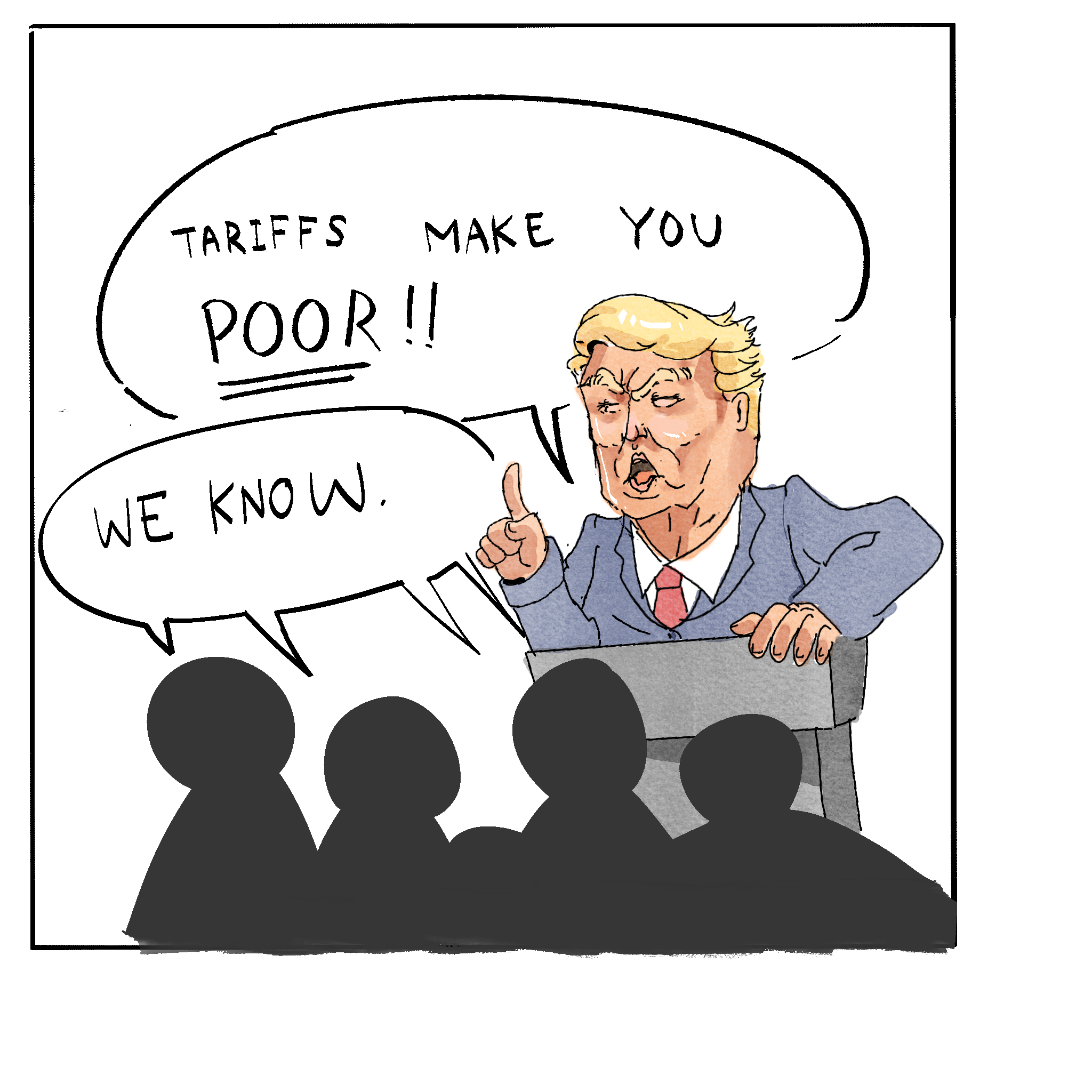By Taryana Odayar.
To intervene or not to intervene? That is the question.
Or, in other words, do we trample over another country’s sovereignty in order to satisfy our ideals of self-defence and save civilian lives?
In order to find an answer to this multi-faceted question, we must first look at what is meant by the term ‘humanitarian intervention,’ commonly referred to as the ‘responsibility to protect’ or R2P. Interestingly, there is currently no set definition of the term ‘humanitarian intervention’, with the closest example of a definition coming from Kofi Annan, the former Secretary General of the United Nations, in his 1999 Annual Report to the General Assembly, wherein he outlined the principles of Humanitarian Intervention, upholding that it should be fairly and consistently applied, be an absolute last resort, and most importantly, adhere to the principles of the Charter of the United Nations, which he referred to as a “living document.”
Now although these points come across as being fairly comprehensive and feasible components of a valid definition, Annan neglects to mention one key point that has been the cause of much controversy and heated discussion amongst political commentators, not to mention heads of state and military strategists, which is the issue of Legality. Is it legal according to the customs of international law to intervene in another country’s domestic politics? Do other nations have the right to place boots on the ground of other countries without their mutually binding consent? And finally, who gets the blame and is accountable for civilian casualties and military operations gone sideways?
When tackling the issue of Legality, oddly enough, the very concept of Humanitarian Intervention seems to be at complete loggerheads with two of the core principles of the United Nation’s charter. Firstly, the Charter itself prohibits the use of force by one state against another, and secondly, it places the decision-making power regarding military intervention in the hands of the UN Security Council members, and not in the hands of individual states.
For instance, Article 2(3) encourages all UN member nations to resolve bilateral and multilateral conflicts first and foremost using “peaceful means”, and Article 2(4) follows up on this by stipulating that, “All states shall refrain in their international relations from the threat or use of force against the territorial integrity or political independence of any state, or in any other manner inconsistent with the Purposes of the United Nations.” Therefore, Article 2(4) clearly takes away the legal right of sovereign nations to militarily intervene. Secondly, Article 24 of the Charter metes out the “primary responsibility for the maintenance of international peace and security” to the UN Security Council (UN SC), and goes a step further by placing the power to decide whether or not intervention is necessary in the hands of the UN SC as well.
Hence, we are made to view the UN SC as the centralized seat of power, responsible for giving the ‘go ahead’ signal to other nations as to when humanitarian intervention (both military and non-military) is in fact necessary and permissible. Article 41 deals with non-military intervention, including “complete or partial interruption of economic relations and of rail, sea, air, postal, telegraphic, radio, and other means of communication, and the severance of diplomatic relations”, whilst Article 42 deals with military intervention, if “measures provided for in Article 41 would be inadequate or have proved to be inadequate”, and would take the form of “demonstrations, blockade, and other operations by air, sea, or land forces of Members of the United Nations.”
It is important to note here that the UN Charter stipulates that if and only if non-violent measures fail, should military strategy be employed, re-iterating Annan’s key underlining principle of military intervention only as a last resort.

But why should the UN SC be allowed to make all these decisions? How did this process of decision-making actually come about? The reasoning behind the devolution of legal jurisdiction to the Security Council in matters of Humanitarian Intervention, in fact stemmed from the lessons learnt during the two World Wars. Ian Hurd, in his paper “Is Humanitarian Intervention Legal?”, says that, “The goal of the framers of the Charter was to centralize the enforcement of international order in the hands of the great powers at the time, and to pacify the relations among other states by depriving them of independent legal channels to war.”
This leads us to the current, modern-day use of humanitarian and military intervention, wherein countries claim to use it for the purpose of self-defence. Following the devastating 9/11 attack on the World Trade Center, the United States identified al Qaeda, and their leader Osama bin Laden, as being the non-state actors responsible for the attack, and named Afghanistan as the 21st century’s most potent terrorist breeding grounds. What then followed was a full-fledged military intervention into Afghanistan, Operation Enduring Freedom, which was begun, in the words of US former Secretary of State, Hillary Clinton, in order to “get the people who attacked us.” This was the start of what foreign policy analysts have now termed the Global War on Terror (GWOT).
However, is vital to distinguish here between the legality of intervening for the purpose of self-defence or in the face of an impending threat, which is allowed for in international law with the approval of the United Nations Security Council, and vigilante intervention or intervention for the sake of retaliation, which, unsurprisingly enough, is in fact illegal. To this day, there is no Security Council resolution that specifically provides the USA with the right to intervene in Afghanistan. However, the USA was able to justify its desire for intervention based on Resolution 1368 of September 12th, whose preamble recognizes “the inherent right of individual or collective self-defence in accordance with the charter,” and which although makes no reference to Afghanistan, was in line with the USA’s stated objectives of intervening in Afghanistan to eradicate al Qaeda, overthrow the Taliban regime, and instate a more democratic government in its place.
In the wake of 9/11; a terrible tragedy that caused nation-wide anger and agony, it was perhaps a bold move on the part of the US administration to intervene in Afghanistan, stoking sentiments of national unity as an entire country waited for the terror group and its leader who were responsible for the attack to be captured and punished. But looking back on the US invasion of Afghanistan, it appears almost ludicrous when one considers that the full force of the US Army was requested to take on the mission of finding and bringing to justice just one man. The US invasion of Afghanistan is indeed a perfect case study of the violation of one of the accepted norms of war; the Principle of Proportionality, which dictates that military force used should be proportional to the expected advantage to be gained, and should not be in excess of this.
According to the Human Rights Watch, (HRW), “civilian deaths in Afghanistan from US and NATO air strikes nearly tripled from 2006 to 2007…exacerbating the problem and fuelling a public backlash.” Furthermore, Malala Yousafzai, the youngest recipient of the 2014 Nobel Peace Prize and a campaigner for women’s rights and young people’s rights to education in Pakistan, went on record earlier this year telling President Obama that she was concerned that his country’s “drone attacks are fueling terrorism” as “innocent victims are killed in these attacks.”
Regrettably, the United Nations Security Council seems to have completely omitted Article 41 of the UN Charter, by not imposing any non-military intervention schemes, such as negotiations or economic sanctions, before the US committed itself to a military operation; a case that has been cited as one of the historical failings of the UN as a decision-making body. This recurrent indolence on the part of the UN was further highlighted by former US representative to the UN, John Bolton, who controversially declared that, “There is no such thing as the United Nations. There is only the international community, which can only be led by the only remaining superpower, which is the United States…When the United States leads, the United Nations will follow. When it suits our interest to do so, we will do so. When it does not suit our interests we will not.”
Perhaps the lack of action on the part of the USA and the International Community during the Rwandan Genocide and the Genocide in Darfur, where, despite the availability of concrete evidence pointing towards extreme crimes against humanity, the Western powers that be chose to turn a blind eye to and refrain from intervening, is an example of “When it does not suit our interests we will not (intervene)” being played out, as no potential gains to their interests were foreseen.
Alarmingly, its becoming increasingly obvious that wars begun in the name of self-defence are being continued to further hidden political and socio-economic agendas. So perhaps we should pay heed to former US congressman, Ron Paul, who aptly remarked that, “we ought to consider a Golden Rule in foreign policy: Don’t do to other nations what we don’t want happening to us. We endlessly bomb these countries and then we wonder why they get upset with us?”






